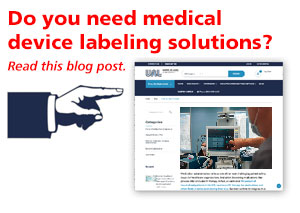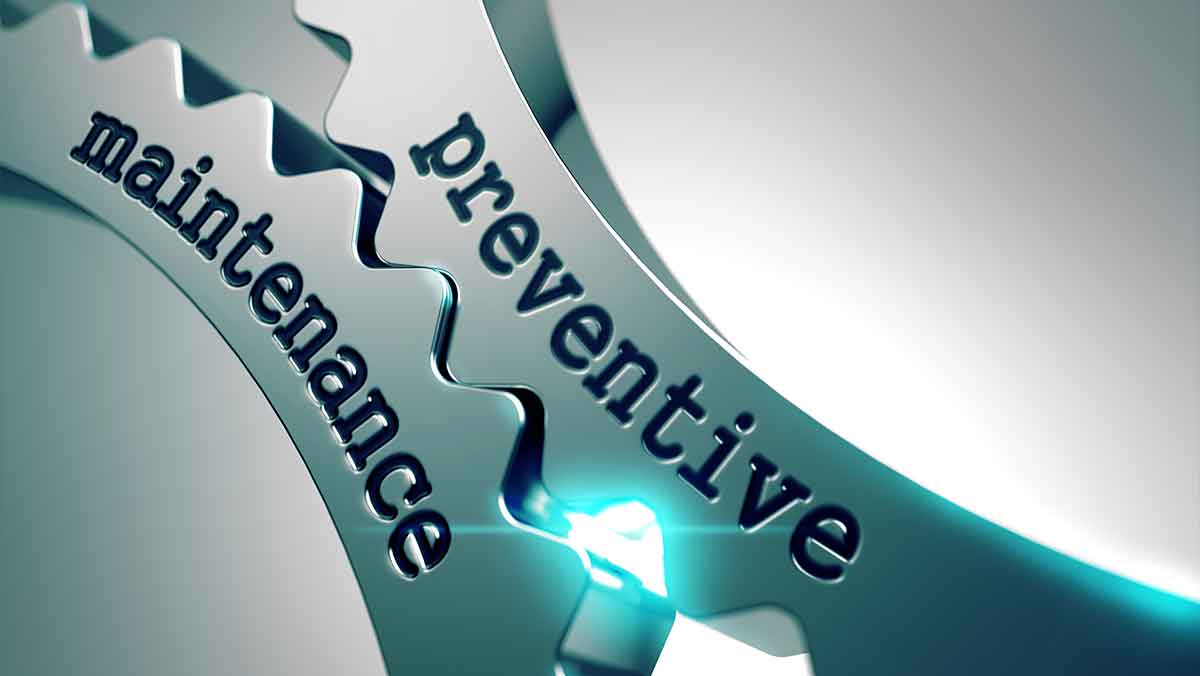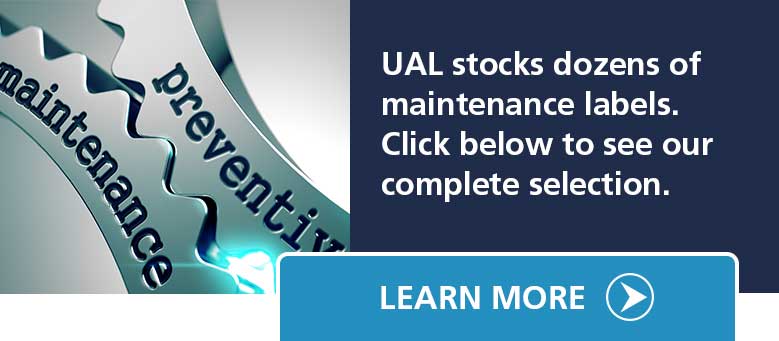Have you ever turned on your air conditioner on the first hot day of the season only to find that it isn’t working? Whether it’s a clogged filter or components that need cleaning, routine maintenance performed at the end of the previous season would have likely identified the issues, prevented an emergency call to your HVAC service provider and averted the abnormally warm temperatures in your home. For a consumer, skipping this step results in a minor inconvenience. But for organizations like hospitals, ambulatory centers, clinics and more, the disruptions are far more troublesome. That’s why employing preventive techniques is essential to help avoid unexpected downtime and disruptions that impact care. Preventive maintenance stickers complement preventive maintenance (PM) programs by communicating important safety, inspection and equipment status information to guide and inform users.
What Is Preventive Maintenance?
Preventive maintenance is a proactive monitoring and maintenance process designed to reduce downtime and minimize unexpected repairs. It uses adjustments, cleaning, lubrication, repairs, parts replacements and more, to extend the life of the equipment.
Why Is Preventive Maintenance Important?
You expect it to work when you flip the switch.
Companies that utilize preventive maintenance techniques increase the reliability of the essential equipment they use every day, minimizing costly unexpected downtime. In addition, preventive maintenance programs deliver a variety of additional benefits.
Extend The Lifetime Of Equipment
If you own a car with an internal combustion engine, an oil change is on your to-do list every few thousand miles. This regular step keeps your engine running smoothly and allows it to last longer. Although oil changes cost between $100 to $200 annually, that is far less expensive than the thousands of dollars it costs to replace an engine or buy a new car if it fails because of neglect.
Regardless of the type of equipment, a planned maintenance approach ensures proper care which helps to meet, or potentially exceed, its projected life expectancy.
Increased Safety and Reduced Risk of Injury
Sometimes workday pressures can cause employees to take shortcuts. If a piece of equipment isn’t operating properly, circumventing safety precautions in an effort to finish the task can lead to an accident. Preventive maintenance keeps equipment in good order and running as expected, reducing accidents and malfunctions that could result in injuries.
Increased Savings
Operations are most efficient when they run uninterrupted. And even though planned maintenance is an expense, it saves money versus unplanned downtime and corrective repairs.
Improved Satisfaction
Further, equipment that isn’t operating properly increases patient wait times, and in more serious situations, can delay critical care. Building preventive maintenance plans into schedules minimizes unexpected disruptions and ensures that equipment operates properly.
Types Of Preventive Maintenance
Preventive maintenance is one type of scheduled maintenance and is designed to lessen the possibility of equipment failing at inopportune times. The principle of preventive maintenance is anticipation and incorporates two types of programs, systematic and condition-based maintenance.
- Systematic Maintenance - consists of servicing equipment at regular intervals. No different than examining belts and hoses and changing the oil in a car, systematic maintenance extends the life of the device and can detect premature wear before a breakdown occurs.
- Condition-Based Maintenance - unlike the regular schedule of systematic maintenance, the condition-based maintenance (CBM) strategy monitors the real-time condition of a medical device to determine the appropriate time for maintenance. These checks include measurements that don’t interfere with operating the device, including visual inspection, assessing performance data and scheduling tests. CBM is triggered if any of these indicators show a decline in performance.
In comparison, corrective maintenance is required when a device isn’t performing at peak level or breaks down when in use. Although the best maintenance programs won’t prevent an occasional breakdown, the opposite tactic - running assets until they break - worsens the problem.
How Stickers Can Help Improve Preventive Maintenance
Preventive maintenance stickers communicate maintenance status and help to identify when equipment needs servicing.
Preventive Maintenance Stickers
For example, applying preventive ‘maintenance due’ stickers to a specific side or easily visible location makes equipment that needs PM easy to spot. Monthly or yearly dates printed on each sticker identify devices in need of quarterly and bi-annual PM. Plus, bright colors make it easier for users to notice PM due dates and submit service requests if necessary. These items are often customized to include the facility name, department and a contact phone number. Tools like the UAL Custom Label Designer allow you to design and order custom preventive maintenance stickers online.
Battery Replaced Label
As medical devices and instruments become more portable, the need for batteries to power those devices has increased. A label that contains the date the battery was last replaced and when a new battery should be installed helps to ensure 100% uptime for these devices.
Alternative Equipment Maintenance (AEM) Label
For many types of equipment, healthcare facilities find that the manufacturer-recommended maintenance activities don’t accurately reflect the needs of equipment, based on their own history of using and maintaining the device. That’s the purpose of an AEM program. It allows a healthcare facility to adjust its maintenance, inspection, and testing frequency from what is recommended by the manufacturer, based on a risk-based assessment by qualified personnel.
AEM equipment maintenance labels identify those devices and the specific maintenance dates defined for each one.
United Ad Label
United Ad Label preventive maintenance stickers come in a variety of durable label and tag formats. These easy-to-apply products use bold lettering and bright colors to make important information stand out. Plus, if your application requires personalized information or unique color options, the UAL custom label designer allows you to design, price and order custom labels online. Click here to learn more.

